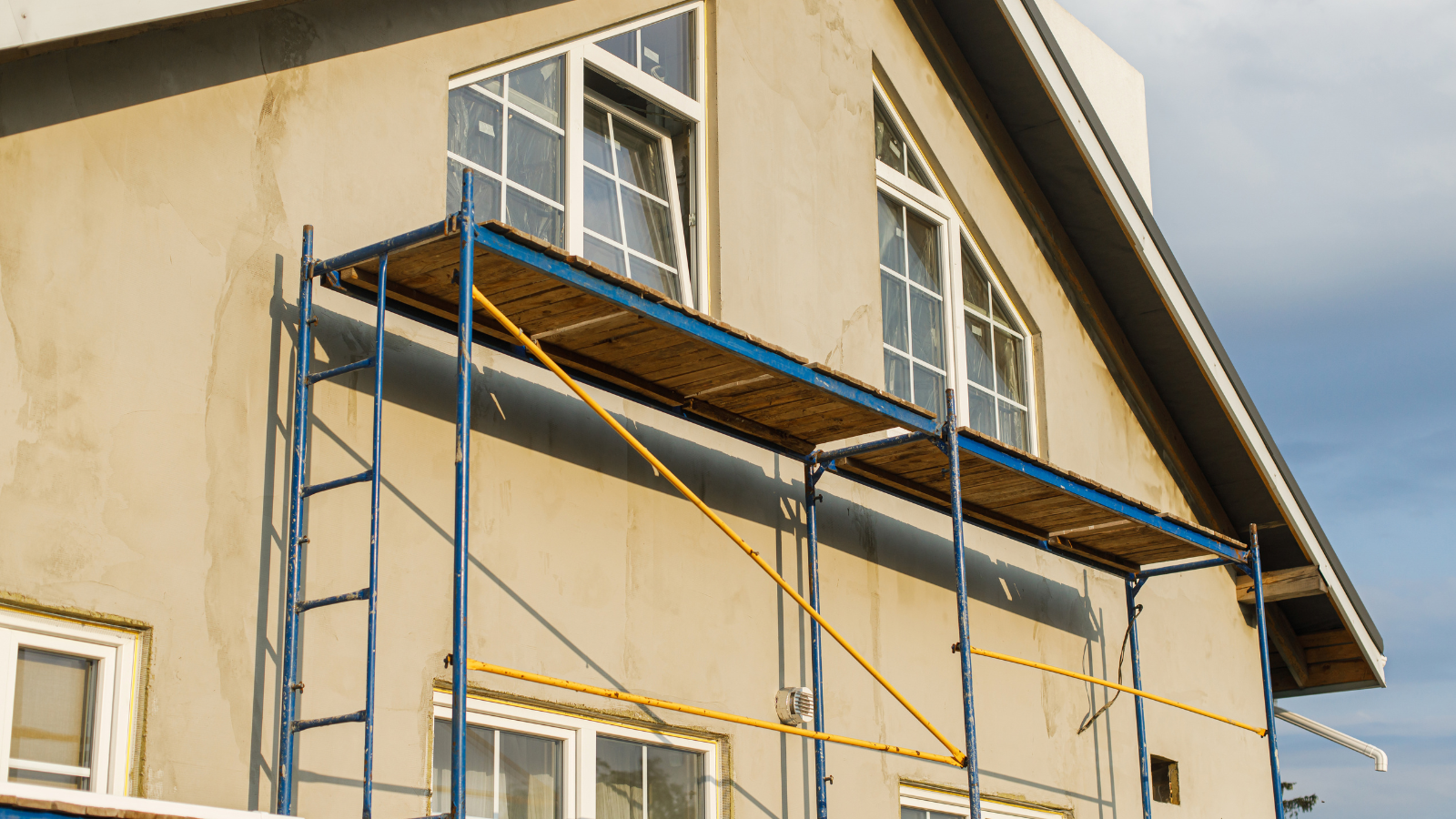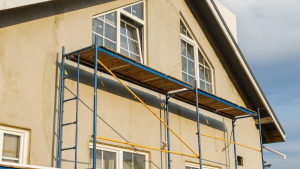When it comes to boosting your home’s energy efficiency, insulated stucco systems offer one of the most effective solutions. Not only do these systems provide a stunning and durable finish, but they also significantly enhance the thermal performance of your building. In this blog post, we’ll explore the insulation value of stucco, delve into the details of stucco insulation systems, and discuss their benefits and considerations for improving energy efficiency.
At CMB Wayne Stucco & EIFS, we have built and maintained strong relationships with homeowners, business owners, contractors, builders, developers, and architects for nearly forty years. Contact us today for a free consultation. Whether you call or email, we’re here to assist and answer any questions you may have.
What is the Insulation Value of Stucco?
Traditional stucco alone is not known for its high insulation value, with an R-value (a measure of thermal resistance) of approximately 0.20 per inch. However, stucco systems can substantially improve thermal performance when combined with insulation materials. Insulated stucco systems, commonly known as Exterior Insulation and Finish Systems (EIFS), incorporate a layer of foam insulation that significantly boosts the R-value. Depending on the type and thickness of the insulation used, these systems can achieve R-values ranging from R-4 to R-12 per inch.
Understanding Stucco Insulation Systems
Stucco insulation systems are multi-layered constructions designed to enhance buildings’ aesthetic appeal and energy efficiency. A typical insulated stucco system includes:
1. Base Layer: The substrate or sheathing where the system is applied can be made of plywood, oriented strand board (OSB), or other materials.
2. Insulation Board: Usually constructed from expanded polystyrene (EPS), extruded polystyrene (XPS), or polyisocyanurate foam. The thickness of this board determines the overall R-value of the system.
3. Base Coat: A cementitious or acrylic-based layer that covers the insulation board, providing a durable and weather-resistant surface.
4. Reinforcement Mesh: Embedded in the base coat to add strength and prevent cracking.
5. Finish Coat: The outermost layer, available in various textures and colors, gives the building its final appearance.
Benefits of Stucco Insulation Systems for Energy Efficiency*
1. Enhanced Thermal Performance: Insulated stucco systems significantly reduce heat transfer through walls, helping maintain a consistent temperature inside. As a result, heating and cooling expenses are reduced. saving overall energy.
2. Moisture Control: These systems effectively manage moisture, blocking the entry of water and lowering the possibility of mold and mildew development, thereby prolonging the building’s structural integrity.
3. Durability and Low Maintenance: Stucco is a robust material that withstands harsh weather conditions. With proper installation and maintenance, insulated stucco systems can last for decades.
4. Aesthetic Versatility: Available in various textures and colors, stucco can be customized to suit any architectural style, enhancing your home’s visual appeal while improving energy efficiency.
Considerations When Installing Stucco Insulation Systems*
1. Professional Installation: For optimal energy efficiency and durability, the system must be installed by experienced professionals. Poor installation might result in problems like water infiltration and reduced thermal performance.
2. Compatibility with Existing Structure: Assess the compatibility of the stucco system with your building’s existing structure before installation. Older buildings may require additional preparation to support the new system.
3. Local Climate: Choose insulation material and thickness based on your region’s climate. Different insulation types perform better under specific climatic conditions.
4. Cost vs. Savings: Insulated stucco systems may have a higher upfront cost than traditional stucco, but long-term energy savings often offset the initial investment. Determine the possible return on investment by using your energy consumption and local utility rates.
Conclusion
Insulated stucco systems offer a compelling combination of aesthetic appeal, durability, and significant energy savings. By understanding the insulation value of stucco, exploring the components of stucco insulation systems, and recognizing the benefits and considerations, homeowners can make informed decisions to enhance their property’s energy performance. Investing in an insulated stucco system is a step towards a more sustainable home and a commitment to long-term savings and comfort.
Whether building a new home or renovating an existing one, consider the advantages of insulated stucco systems. These systems blend beauty with energy efficiency, making them an excellent choice for the modern, eco-conscious homeowner.


